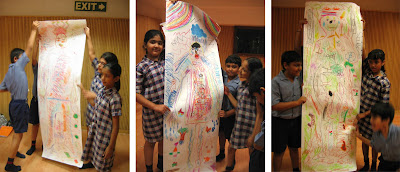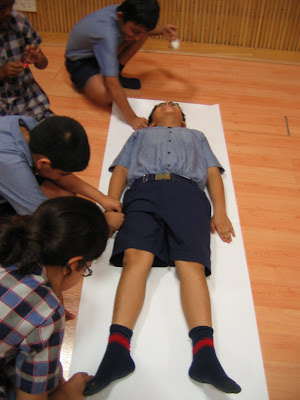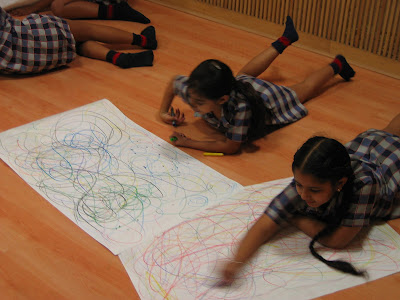Article by Leah Mann editing assistance from Diana Coogle, Amy Williams and Ela Lamblin.
Learning and play can be simultaneous
At the New Horizons Conference, Lelavision will demonstrate the manifestation of this art process I just described in performance as well as provide experiential activities from our kinetic, aural, spacial and play-filled tool belt. Within our process of discovery and creation we have a motto: "Never let the fear of being bad at something stop you from trying!" We learn so much from our "mistakes," and often they become unexpected discoveries that feed and propel our work forward.
What does Ms. Frizzle of The Magic School Bus say? "Let's get messy, take chances, make mistakes!!!!" (And learn from them!) I'd like to think that this mentality could propel students through graduation!
When Ela and I teach residencies, we often ask the students, "If necessity is the mother of invention, what would you create?" Across the board, whether students are affluent or impoverished, the number one answer is "a money-making machine." Though children in our western society seem to think the solution to their problems is best solved by outside sources, all us educators have the great opportunity to encourage them to look inward, to use their brainpower and imagination, which is their best, most accessible tool.
The second most common reply is "a homework machine-- because schoolwork is no fun." But what if fun and learning were merged more often? When Ela was young, his father made a deal with him, saying "I won't buy you any toys, but I'll help you make whatever you want." This symbiotic learning/playing process has fostered a lifestyle based in a love of science, math, engineering and invention. That same creative and learning-based lifestyle blossoms into our performances and underscores our teaching. Using gestures and sounds, we teach physics. Using whole-body and group sentences, we teach grammar. Using students as the polyrhythmic equations, we teach math.
What will your doorway be?
You know the saying? "Give a person a fish and they eat for a day. Teach a person to fish and they eat for a lifetime." How can we teach our children to have the gumption to stand up to life with all its challenges with well developed skills in invention, creative problem solving, self-motivated learning / inquiry / discovery?
What if education was fun and everyone got to play? What if the joy of learning radiated from everyone in the classroom – teachers and students alike? Would students stay in school? Would they score just as well (or better!) on standardized tests? What if "creative spark" set afire the imagination to serve all subjects and "play" became a synonym for "learn"?
"Do what I say, not what I do"




















































